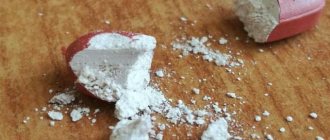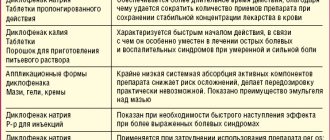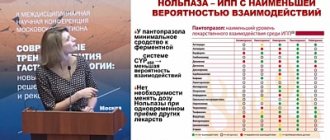Home | About us | Delivery | Advertisers | Login | Registration
Delivery on Sundays and holidays does not work!
- Medicines
- dietary supplementsVitamins
- Categories from A to Z
- Brands from A to Z
- Products from A to Z
- Medical equipment
- beauty
- Child
- Care
- Honey products appointments
- Herbs and herbal teas
- Medical nutrition
- Journey
- Making medicinesStock
Pharmacy online is the best pharmacy in Almaty, delivering medicines to Almaty. An online pharmacy or online pharmacy provides the following types of services: delivery of medicines, medicines to your home. Online pharmacy Almaty or online pharmacy Almaty delivers medicines to your home, as well as home delivery of medicines in Almaty.
my basket
Apteka84.kz is an online pharmacy that offers its customers medicines, medicinal and decorative cosmetics, dietary supplements, vitamins, baby food, intimate products for adults, medical equipment and thousands of other medical and cosmetic products at low prices. All data presented on the Apteka84.kz website is for informational purposes only and is not a substitute for professional medical care. Apteka84.kz strongly recommends that you carefully read the instructions for use contained in each package of medicines and other products. If you currently have any symptoms of the disease, you should seek help from a doctor. You should always tell your doctor or pharmacist about all the medicines you take. If you feel you need further help, please consult your local pharmacist or contact our GP online or by telephone.
© 2022 Pharmacy 84.
Thrombopol tablet p/o intestinal solution. 75 mg 30 pcs
Pharmacological group:
Non-steroidal anti-inflammatory drug (NSAID).
Pharmacodynamics:
The mechanism of the antiplatelet action of acetylsalicylic acid is based on irreversible inhibition of cyclooxygenase (COX-1), as a result of which the synthesis of thromboxane is blocked
A2 and inhibits platelet aggregation. The antiplatelet effect develops even after the use of small doses of the drug and persists for 7 days after a single dose. These properties of acetylsalicylic acid are used in the prevention and treatment of myocardial infarction, coronary heart disease, and complications of varicose veins.
Acetylsalicylic acid (ASA) also has anti-inflammatory, antipyretic and analgesic effects.
TROMBOPOL® tablets have an enteric coating, due to which they dissolve and release the active substance in a more alkaline environment of the duodenum, reducing the irritating effect of acetylsalicylic acid on the gastric mucosa.
Pharmacokinetics:
Absorption of acetylsalicylic acid from enteric-coated tablets begins 3-4 hours after taking the drug, confirming that the coating effectively blocks the dissolution of the drug in the stomach.
The maximum plasma concentration occurs after approximately 2-3 hours and averages 12.7 mcg/ml for 150 mg tablets and 6.72 mcg/ml for 75 mg tablets.
The presence of food in the gastrointestinal tract slows down the absorption of the drug.
The rate of systemic absorption (AUC) is 56.42 mcg x hour/ml for 75 mg tablets and 108.08 mcg x hour/ml for 150 mg tablets.
Distribution
Acetylsalicylic acid quickly and significantly penetrates most tissues and biological fluids of the body.
The relative distribution is about 0.15-0.2 l/kg and increases simultaneously with an increase in the concentration of the drug in the blood serum. The degree of association of the drug with plasma proteins depends on the concentration; in healthy individuals it decreases simultaneously with a decrease in this concentration.
In renal failure, during pregnancy and in newborns, salicylates can displace bilirubin from binding with albumin and contribute to the development of bilirubin encephalopathy.
Metabolism
Acetylsalicylic acid is partially metabolized during absorption. This process occurs under the influence of enzymes, mainly in the liver, with the formation of metabolites such as phenyl salicylate, glucuronide salicylate and salicyluric acid, found in many tissues and urine.
In women, the metabolic process is slower (less enzyme activity in the blood serum).
Removal
The half-life (T 1/2) of acetylsalicylic acid from blood plasma is about 15-20 minutes.
Unlike other salicylates, with repeated administration of the drug, non-hydrolyzed acetylsalicylic acid does not accumulate in the blood serum.
Only 1% of an ingested dose of acetylsalicylic acid is excreted by the kidneys in the form of non-hydrolyzed acetylsalicylic acid, the rest is excreted in the form of salicylates and their metabolites.
In patients with normal renal function, 80-100% of a single dose of the drug is excreted by the kidneys within 24-72 hours.
Thrombopol, 75 mg, enteric-coated tablets, 30 pcs.
Thrombopol is an NSAID, antiplatelet agent. The mechanism of action of acetylsalicylic acid is based on irreversible inhibition of COX-1, resulting in blockade of thromboxane A2 synthesis and suppression of platelet aggregation. The antiplatelet effect develops even after using the drug in small doses and persists for 7 days after a single dose. Thanks to these properties, acetylsalicylic acid is used for the prevention and treatment of myocardial infarction, ischemic heart disease, and complications of varicose veins. Acetylsalicylic acid also has anti-inflammatory, analgesic, and antipyretic effects.
Trombopol tablets have an enteric coating, due to which they dissolve and release the active substance in a more alkaline environment of the duodenum, reducing the irritating effect of acetylsalicylic acid on the gastric mucosa.
Pharmacokinetics Absorption
Absorption of acetylsalicylic acid from enteric-coated tablets begins 3-4 hours after taking the drug, confirming that the coating effectively blocks the dissolution of the drug in the stomach. Cmax in plasma is reached after approximately 2-3 hours and averages 12.7 mcg/ml for 150 mg tablets and 6.72 mcg/ml for 75 mg tablets. The presence of food in the gastrointestinal tract slows down the absorption of the drug.
AUC is 56.42 mcg×h/ml for 75 mg tablets and 108.08 mcg×h/ml for 150 mg tablets.
Distribution
Acetylsalicylic acid quickly and significantly penetrates most tissues and biological fluids of the body. The degree of binding of the drug to plasma proteins depends on the concentration; in healthy individuals it decreases simultaneously with a decrease in this concentration.
The relative distribution is about 0.15-0.2 l/kg and increases simultaneously with an increase in the concentration of the drug in the blood serum.
Unlike other salicylates, with repeated administration of the drug, non-hydrolyzed acetylsalicylic acid does not accumulate in the blood serum.
Metabolism
Acetylsalicylic acid is partially metabolized during absorption. This process occurs under the influence of enzymes, mainly in the liver, with the formation of metabolites such as phenyl salicylate, glucuronide salicylate and salicyluric acid, found in many tissues and urine.
Removal
T1/2 of acetylsalicylic acid from blood plasma is about 15-20 minutes.
Only 1% of an ingested dose of acetylsalicylic acid is excreted by the kidneys in the form of non-hydrolyzed acetylsalicylic acid, the rest is excreted in the form of salicylates and their metabolites.
In patients with normal renal function, 80-100% of a single dose of the drug is excreted by the kidneys within 24-72 hours.
Pharmacokinetics in special clinical situations
In renal failure, during pregnancy and in newborns, salicylates can displace bilirubin from binding with albumin and contribute to the development of bilirubin encephalopathy.
In women, the metabolic process is slower (less enzyme activity in the blood serum).
Thrombo ASS®
When used simultaneously, ASA enhances the effect of the following drugs; If it is necessary to use ASA simultaneously with the listed drugs, the need to reduce the dose of these drugs should be considered:
- methotrexate, by reducing renal clearance and displacing it from protein binding;
- when used simultaneously with anticoagulants, thrombolytic and antiplatelet agents (ticlopidine, clopidogrel), there is an increase in the risk of bleeding as a result of the synergism of the main therapeutic effects of the drugs used;
- when used simultaneously with drugs that have anticoagulant, thrombolytic or antiplatelet effects, there is an increased damaging effect on the gastrointestinal mucosa;
- selective serotonin reuptake inhibitors, which may lead to an increased risk of bleeding from the upper gastrointestinal tract (synergism with ASA);
- digoxin, due to a decrease in its renal excretion, which can lead to an overdose;
— hypoglycemic agents for oral administration (sulfonylurea derivatives) and insulin due to the hypoglycemic properties of ASA itself in high doses and displacing sulfonylurea derivatives from binding with blood plasma proteins;
- when used simultaneously with valproic acid, its toxicity increases due to the displacement of its connection with blood plasma proteins;
- NSAIDs and salicylic acid derivatives in high doses (increased risk of ulcerogenic effect and bleeding from the gastrointestinal tract as a result of synergistic action); when used simultaneously with ibuprofen, antagonism is observed in relation to irreversible platelet inhibition caused by the action of ASA, which leads to a decrease in the cardioprotective effects of ASA;
— ethanol (increased risk of damage to the gastrointestinal mucosa and prolongation of bleeding time as a result of the mutual enhancement of the effects of ASA and ethanol).
Concomitant use of ASA in high doses may weaken the effect of the following drugs; If it is necessary to simultaneously prescribe ASA with the listed drugs, the need to adjust the dose of the listed drugs should be considered:
- any diuretics (when used together with ASA in high doses, a decrease in glomerular filtration rate (GFR) is observed as a result of a decrease in the synthesis of prostaglandins in the kidneys);
- angiotensin-converting enzyme (ACE) inhibitors (a dose-dependent decrease in GFR is noted as a result of inhibition of prostaglandins that have a vasodilatory effect, respectively, a weakening of the hypotensive effect. A clinical decrease in GFR is observed with a daily dose of ASA more than 160 mg. In addition, there is a decrease in the positive cardioprotective effect of ACE inhibitors, prescribed to patients for the treatment of chronic heart failure. This effect is also manifested when used in conjunction with ASA in large doses).
- drugs with uricosuric action - benzbromarone, probenecid (reduced uricosuric effect due to competitive suppression of renal tubular excretion of uric acid);
- when used simultaneously with systemic glucocorticosteroids (with the exception of hydrocortisone used for replacement therapy of Addison's disease), there is an increase in the excretion of salicylates and, accordingly, a weakening of their effect.
Thrombopol 150 mg No. 30 tablet p.p.o. solution/intestinal
Instructions for medical use of the drug Trombopol Trade name Trombopol International nonproprietary name Acetylsalicylic acid Dosage form Enteric-coated tablets, 75 mg and 150 mg Composition One tablet contains the active substance - acetylsalicylic acid 75 mg or 150 mg, excipients: corn starch, cellulose powder, sodium starch glycolate, shell composition: hydroxypropyl methylcellulose, methacrylic acid copolymer, triethyl citrate, titanium dioxide, talc, sodium lauryl sulfate, cochineal red varnish E-124, colloidal silicon dioxide, sodium bicarbonate. Description Tablets, enteric-coated, pink, round with a biconvex surface. Pharmacotherapeutic group: Platelet aggregation inhibitors. ATC code B01AC06 Pharmacological properties Pharmacokinetics Acetylsalicylic acid quickly and significantly penetrates most tissues and biological fluids of the body. Approximately 33% of the drug is protein bound. The maximum plasma concentration is observed after 6 hours and averages 12.7 mcg/ml for 150 mg tablets and 6.72 mcg/ml for 75 mg tablets. The presence of food in the gastrointestinal tract slows down the absorption of the drug. Acetylsalicylic acid is partially metabolized during absorption. Salicylates are conjugated mainly with glycine to form salicyluric acid, and with glucuronic acid to form salicylphenol and salicylacyl glucuronate; only a small part of them is hydroxylated to form gentisic acid, 2,3-dihydroxybenzoic and 2,3,5-trihydroxybenzoic acid. The half-life (T ½) of acetylsalicylic acid from plasma is 15-20 minutes. 1% of an orally administered dose of acetylsalicylic acid is excreted in the urine in the form of non-hydrolyzed acetylsalicylic acid, the rest is excreted in the form of salicylates and their metabolites. 80-100% of a single dose of the drug is excreted in the urine within 24-72 hours. Pharmacodynamics Thrombopol is an antithrombic agent, an inhibitor of platelet aggregation, contains acetylsalicylic acid, which suppresses platelet aggregation, has an antipyretic, analgesic and anti-inflammatory effect. The mechanism of suppression of aggregation by acetylsalicylic acid is to suppress the activity of cyclooxygenase in platelets, which transforms arachidonic acid into cyclic peroxides, which are precursors of prostaglandins and thromboxanes. The pharmaceutical form of the drug Trombopol is enteric-coated tablets that do not dissolve in the stomach, as a result of which the irritating effect of acetylsalicylic acid on the gastric mucosa is reduced. The dissolution of the tablet and the release of the active substance occurs in a more alkaline environment of the duodenum. Indications for use Suppression of platelet aggregation - in the prevention of coronary heart disease, including myocardial infarction, in the absence or presence of circulatory failure - in the prevention of other diseases characterized by the formation of blood clots in blood vessels Method of administration The tablets are swallowed without chewing - whole, with a small amount of water. 1 - 2 tablets of 75 mg or 1 tablet of 150 mg per day during or after meals. The doctor decides on the duration of the course of treatment. Side effects - heartburn, lack of appetite, feeling of fullness in the epigastric region, nausea, vomiting, diarrhea, abdominal pain - headache, dizziness - urticaria, angoneurotic edema, bronchospasm, rhinitis, lacrimation, collapse, Quincke's edema, anaphylactic shock - damage gastric mucosa, exacerbation of gastric and duodenal ulcers, bleeding - liver enlargement, increased activity of serum aminotransferases, alkaline phosphatase, increased bilirubin concentration, decreased thromboxane concentration - noise and ringing in the ears - visual impairment - albuminuria, the presence of leukocytes and red blood cells in the urine , nephropathy with necrosis of the renal papillae - rash, bleeding from the mucous membranes, as well as toxic colliquation necrosis of the epidermis - leukopenia, thrombocytopenia, aplastic anemia, agranulocytosis, eosinopenia, purpura, disseminated intravascular coagulation syndrome Contraindications - hypersensitivity to the drug or allergy to other non-steroidal anti-inflammatory drugs remedies - gastric ulcer and duodenal ulcer, in the acute phase - gastrointestinal bleeding - hemophilia, von Willebrand disease, telangiectasia, thrombocytopenia - bronchial asthma - severe liver and kidney failure - I-III trimester of pregnancy - viral diseases (especially influenza and chickenpox) in children under 15 years of age Drug interactions Due to the acetylation of proteins, acetylsalicylic acid can change their association with other drugs, for example, acetylated albumin shows greater affinity for phenylbutazone. Thrombopol enhances the effect of: - heparin and oral antithrombotic drugs - thrombolytic drugs such as streptokinase, alteplase - oral antidiabetic drugs (chlorpropamide) - methotrexate - valproic acid - fibrinolytic agents - corticosteroids - digoxin, barbiturates and lithium compounds Thrombopol can weaken the effect of: - spirolactone (the natriuretic effect of spirolactone and the absorption of its active metabolite, canrenone, are slightly weakened) - drugs that increase the excretion of uric acid in the urine (phenylbutazone, probenecid, sulfinpyrazone). Sulfinpyrazone reduces the excretion of acetylsalicylic acid through the kidneys. The simultaneous use of acetylsalicylic acid and carbonic anhydrase inhibitors (acetazolamide) may increase the concentration of carbonic anhydrase inhibitors in the serum as a result of competent suppression of their excretion through the renal tubules (symptoms of side effects, such as metabolic acidosis, may increase). Carbonic anhydrase inhibitors may also increase the toxicity of salicylates. Special instructions As a result of using the drug, a peptic ulcer may develop and gastrointestinal bleeding may occur. Since acetylsalicylic acid and its metabolites are excreted in the urine, the risk of increased side effects in patients with impaired renal function and chronic renal failure increases. The drug should be used with caution in patients with a history of hypoprothrombinemia, vitamin K deficiency, thrombocytopenia, severe kidney damage, and those taking antithrombotic drugs. It is necessary to stop taking acetylsalicylic acid 5-7 days before the planned surgery due to a blood clotting disorder and an increased risk of bleeding. Take with caution in case of: heavy menstrual bleeding, use of intrauterine contraceptives, urate diarrhesis, hypertension, heart failure, deficiency of glucose-6-phosphate dehydrogenase. When treating with acetylsalicylic acid, it is prohibited to drink alcohol, as it increases the risk of increased side effects from the gastrointestinal tract. In patients over 65 years of age, acetylsalicylic acid should be used in lower doses (75 mg) and at longer intervals. Pregnancy and lactation During the second trimester of pregnancy, acetylsalicylic acid can be used only if, in the opinion of the doctor, the potential benefit to the mother outweighs the risk to the fetus. The drug should not be prescribed during breastfeeding. Features of the effect of the drug on the ability to drive vehicles and maintain moving mechanisms Considering the side effects of the drug, caution should be exercised when driving a vehicle or potentially dangerous mesanisms. Overdose Symptoms - increased side effects. Treatment: gastric lavage and induce vomiting, drink plenty of fluids, take activated charcoal, and when treating acidosis, sodium bicarbonate should be administered intravenously. In cases of prolongation of prothrombin time, it is necessary to use vitamin K. Dialysis effectively removes acetylsalicylic acid from the body and helps in restoring acid-base and water-electrolyte metabolism. Release form and packaging The drug Trombopol is packaged in 10 tablets in a blister pack made of polyvinyl chloride film and aluminum foil. 3 or 6 blister packs together with instructions for medical use in the state and Russian languages are placed in a cardboard pack. Storage conditions Store in a dry place, protected from light, at a temperature not exceeding 25°C. Keep out of the reach of children! Shelf life 2 years Do not use the drug after the expiration date Conditions for dispensing from pharmacies Without a prescription Manufacturer Pharmaceutical S.A. st. Pelplinska 19, 83-200 Starogard Gdanski, Poland


